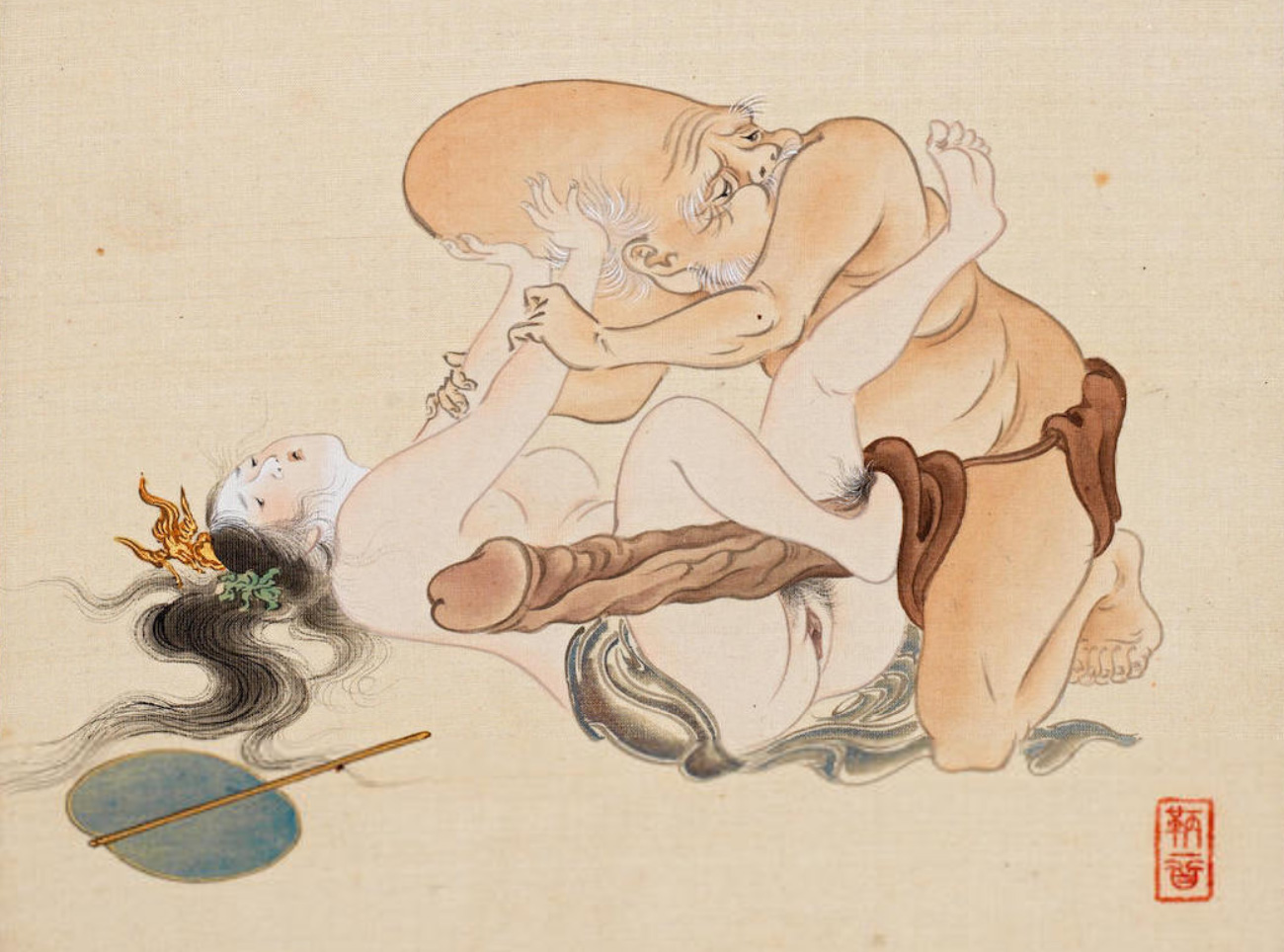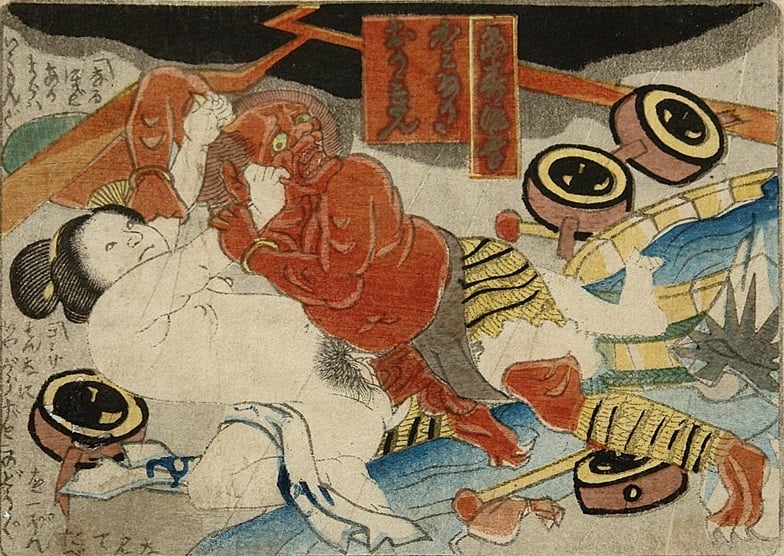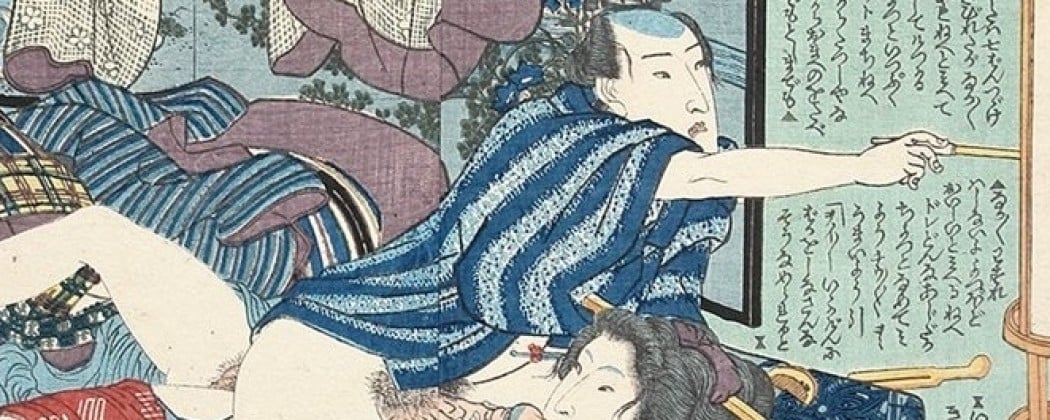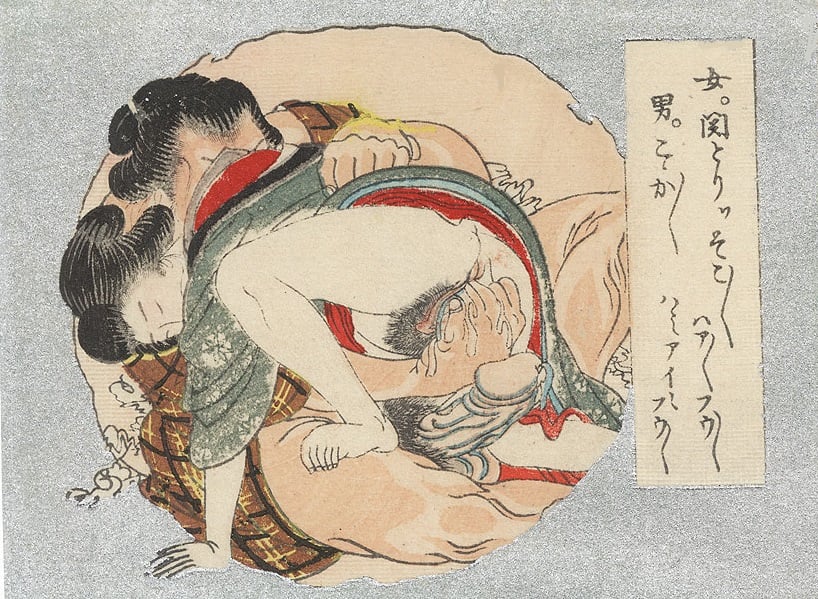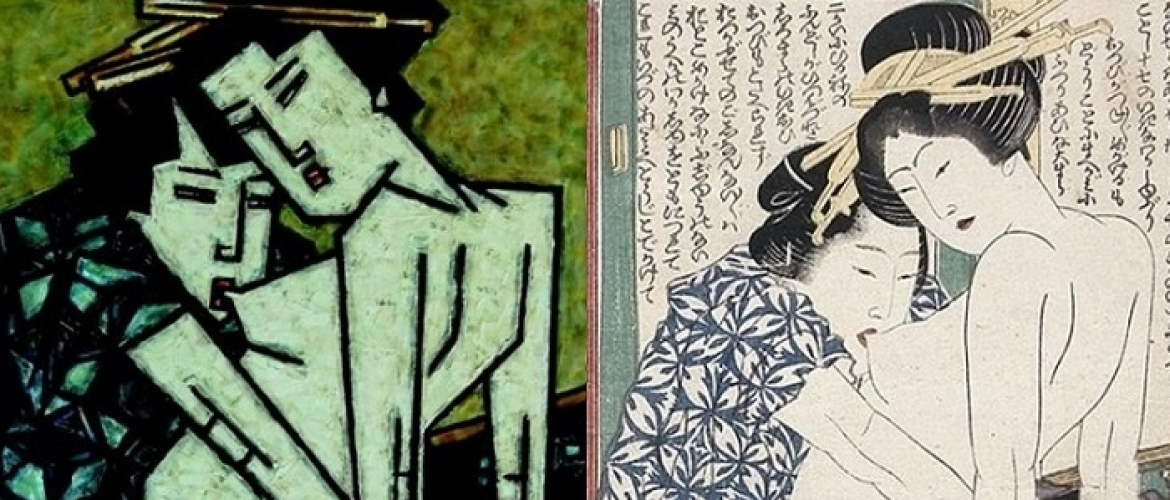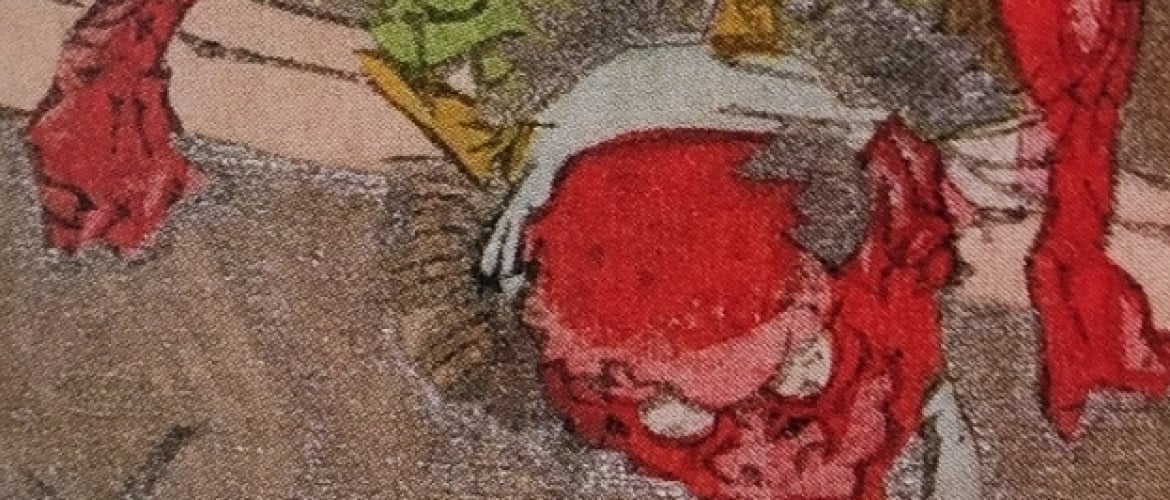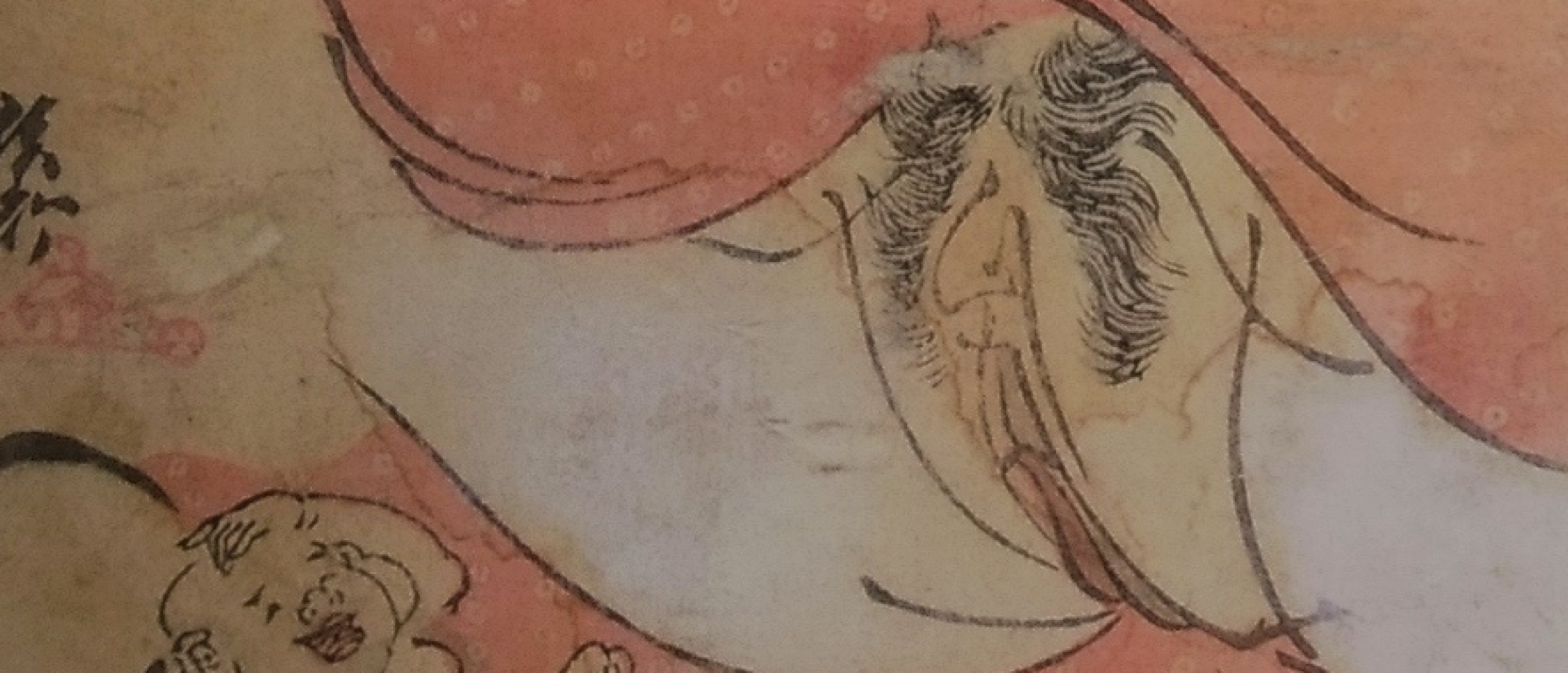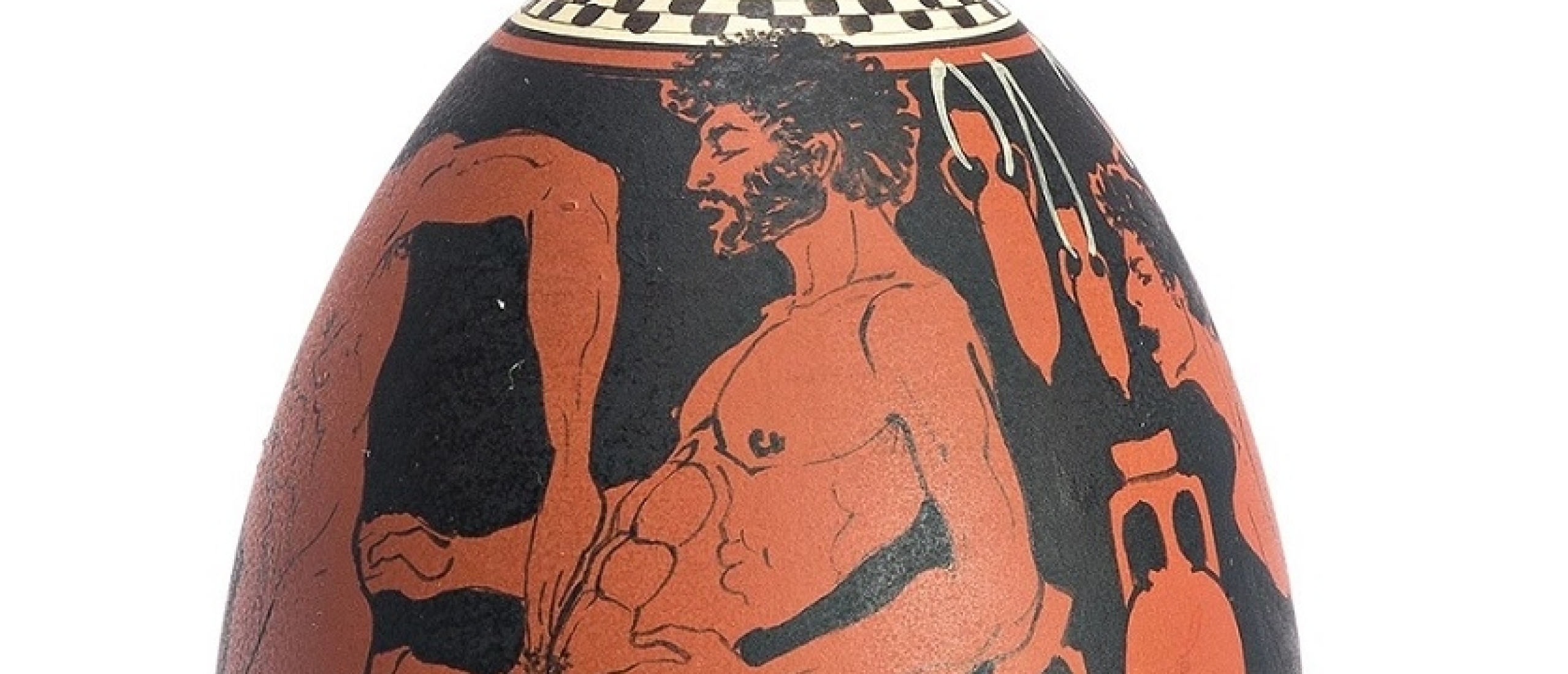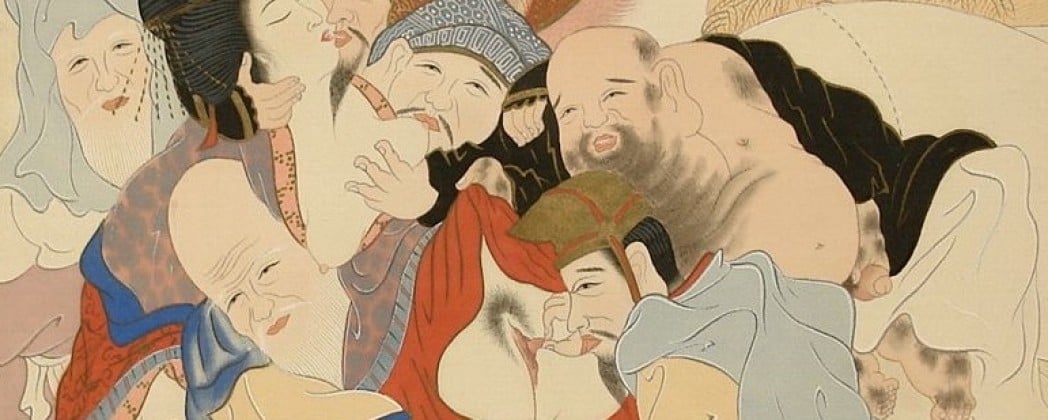
The following Taisho era (1912-1928) makimono* painting is part of a horizontal hanging scroll that consists of two images**.
The Seven Lucky Gods
The painting displays The Seven Lucky Gods (also called Seven Gods of Fortune) as they are (six are male) making love to the only female god (Benzaiten) of the bunch. But before we are going to discuss their erotic adventures let’s take a brief look at their origins.
Let’s take a look at how The Seven Lucky Gods were portrayed in shunga…
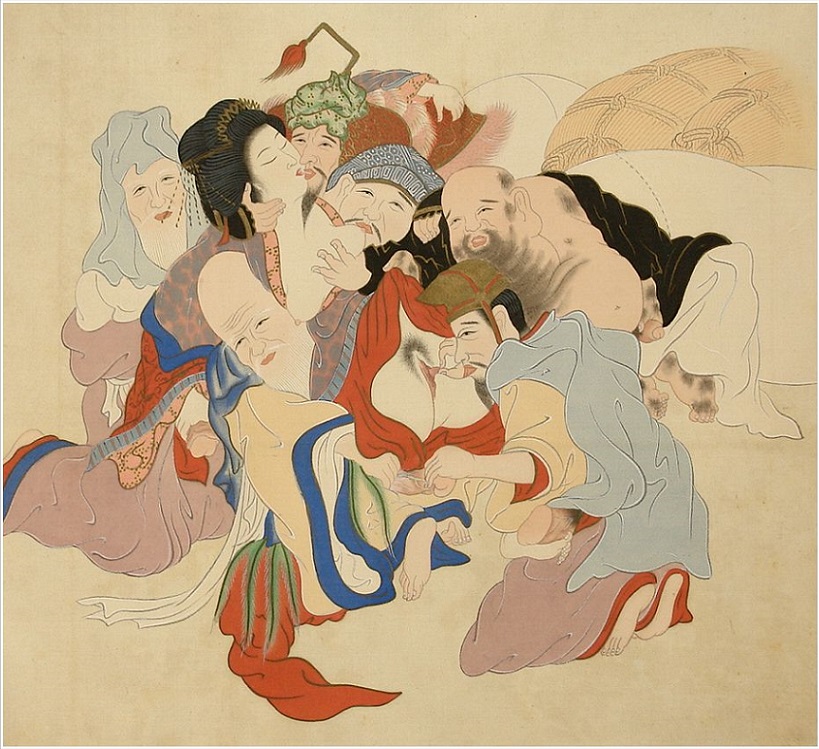
Fig.1. Shunga scroll painting depicting ‘The Seven Lucky Gods having an orgy‘ (c.1910s) by an identified artist (Sold)
Taoism and Buddhism
The Seven Lucky Gods are being mentioned for the first time as a collective in 1420. Strangely enough only one (Ebisu) is completely rooted in Japan. Three gods are related to Hinduism (Benzaiten, Bishamonten, and Daikokuten) as incorporated in Nepalese and Indian culture and the remaining three (Fukurokuju, Hotei, and Jurojin) are from the Chinese Taoism and Buddhism.
Merchants
These gods have been recognized as such for over a thousand years ago by a large number of followers. At first, they were honored by merchants since the first two gods (Ebisu and Daikokuten) represented business and trade. Later the other ranks of the Japanese population looked for other gods that could represent them and their occupations. For instance, Benzaiten was the benefactor of the arts and Fukurokuju the patron of the sciences.
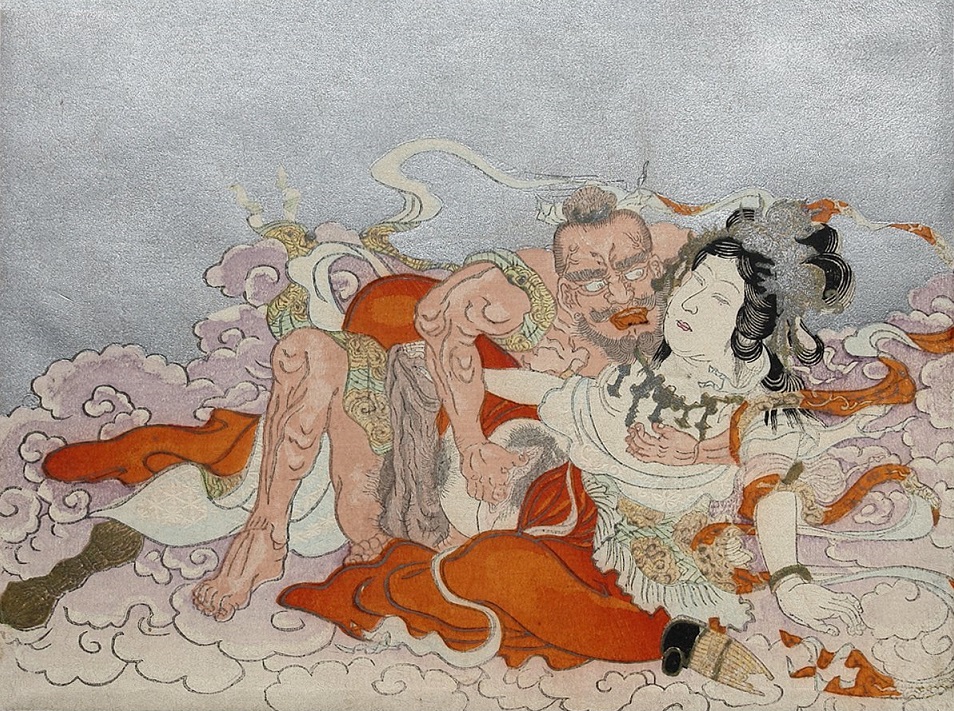
Fig.2. ‘Benzaiten (God of music and wisdom) making love to Bishamon (God of War, the protector of demons and the patron of wealth) on a cloud‘ (c.1900) attrib. to Ikeda Terukata (1883-1921) (Sold)
Hotei
They are believed to award good luck and are represented in many Japanese cultural expressions. Amongst the seven, not all the gods are mythical characters, as there is one who is a historical figure (Hotei).
Benzaiten and the Other Six Deities
As she’s the only female in the ensemble, the goddess Benzaiten (goddess of knowledge, art and beauty) is the focus of the other six deities. On the right with the black kimono and unusual hairy details sits is Hotei, the god of abundance and good health.
Underneath Benzaiten lays Fukurokuju (known for his long forehead), the god of happiness, wealth and longevity. His penis is being stroked by Ebisu, the god of fishers and merchants. At the same time he is about to perform cunnilingus on Benzaiten’s (hence the comical connotation!). The man sucking on her breast is Daikokuten who is the god of wealth, commerce and trade.
Bishamonten, the god of warriors is tongue kissing Benzaiten and the modest man in the background with the light blue fabric over his head is Jurojin, the god of longevity.
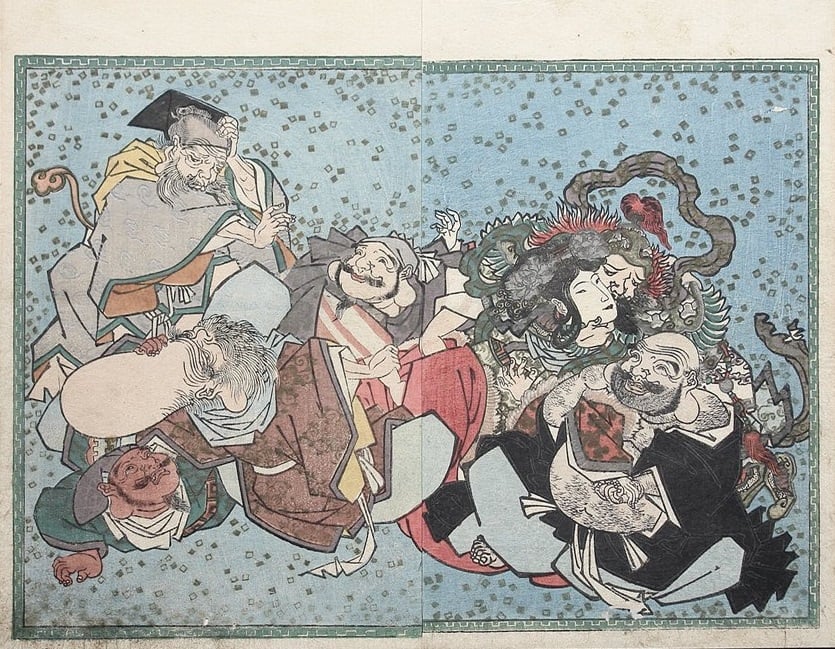
Fig.3. ‘Orgy with the Seven Lucky Gods‘ (c.1827) from the series ‘Fashionable Men of the Zodiac Year (Imayo toshi-otoko)‘ by Utagawa Kunitora (act.ca. 1804-1844) (Source: AkAntiek.nl)
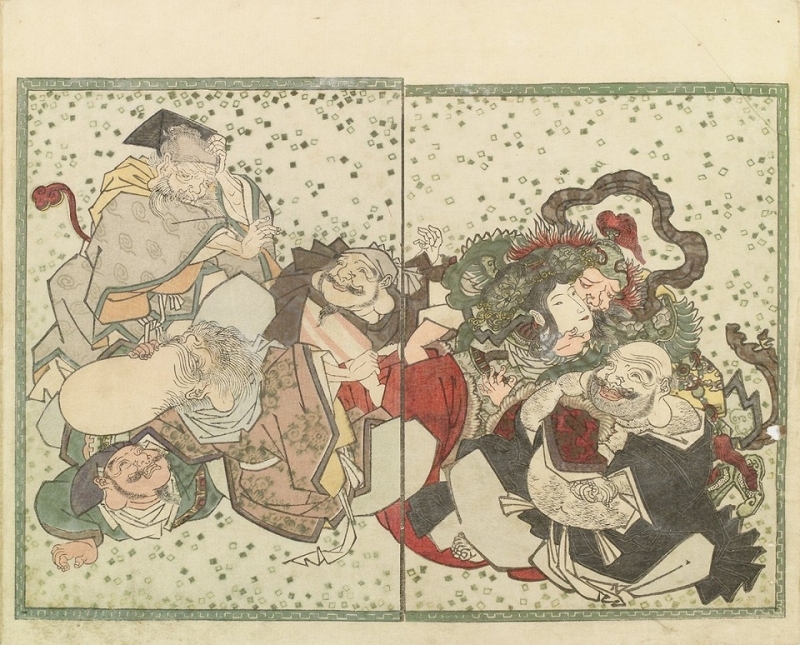
Fig.3a. Another impression with green accents (Tuyashun)
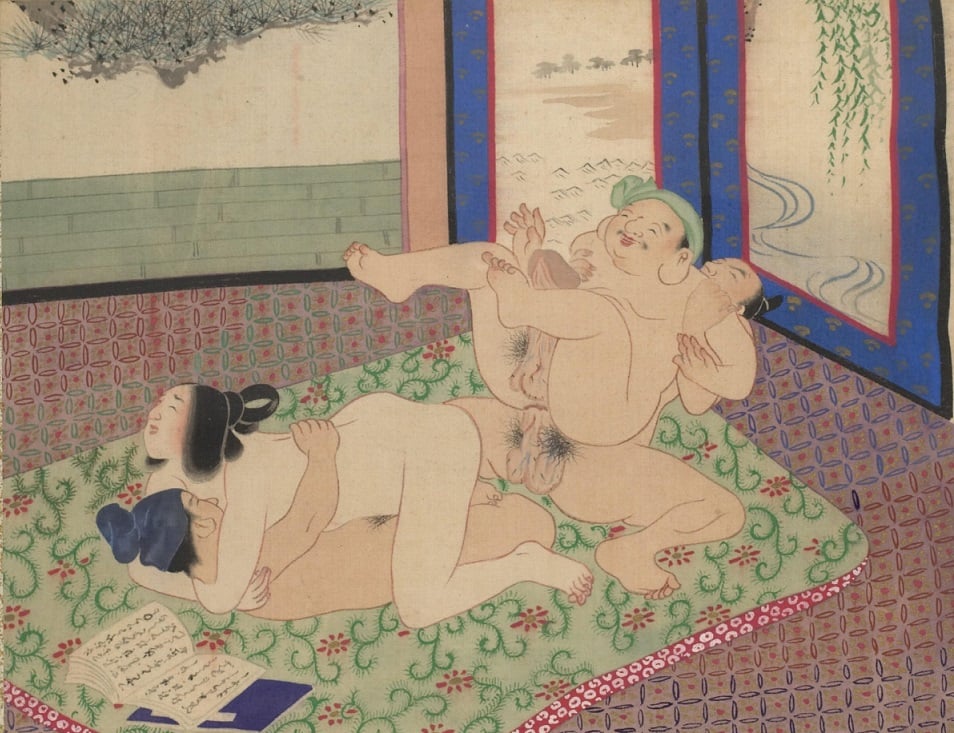
Fig.4. Scroll painting featuring ‘Four members of the Seven Lucky Gods making love‘ (c.1910s) by an unknown artist
Restraint
In this scene a clearly reluctant Benzaiten tries to ward off with all her might the advances of Fukurokuju. The size of both their genitals is probably the reason for her restraint.
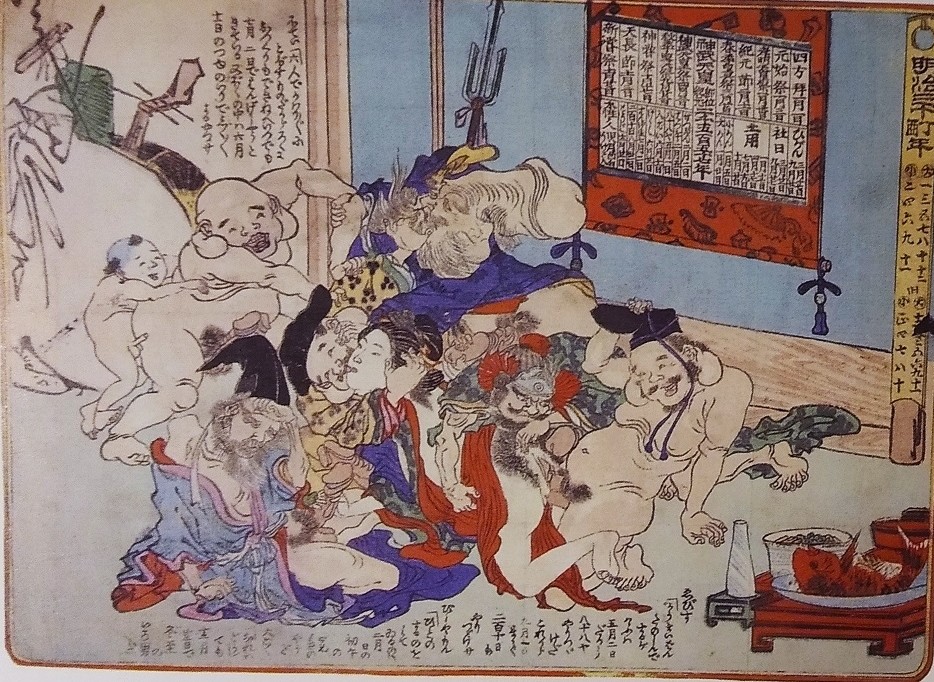
Fig.6. Calendar print (chuban) ‘The horny seven gods of luck‘ (c.1897) by Utagawa school
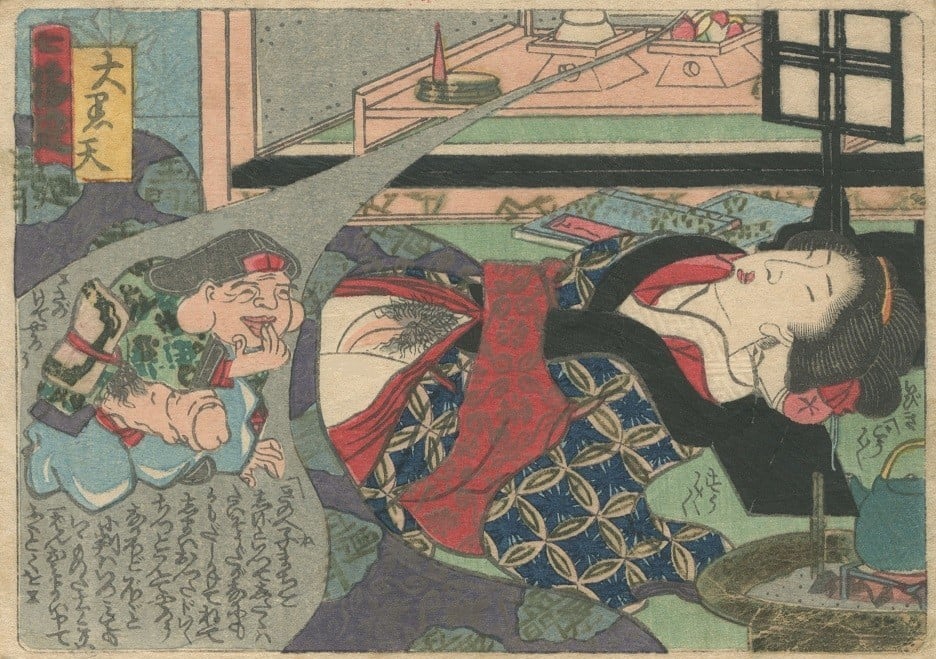
Fig.7. ‘An aroused Daikokuten observing a sleeping geisha‘ (c.1850s) by Koikawa Shozan (Picture by Shungacollection)
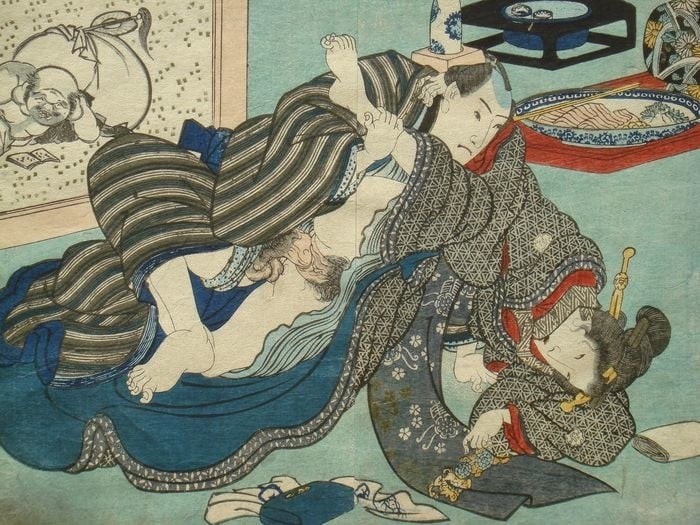
‘Fig.8. Passionate couple after dinner (Hotei looking from the screen)‘ (c.1853) from the series ‘Takarabune hichi fuku jin (Treasure Boat: Connoisseurs of Women)‘ by Utagawa Kuniyoshi

Fig.9. Fukurokuju's head was a grateful object for erotic mockery in shunga art. This is a wrapper for the series 'Owarai (Loud Laughter) ' (before 1871) by Kawanabe Kyosai
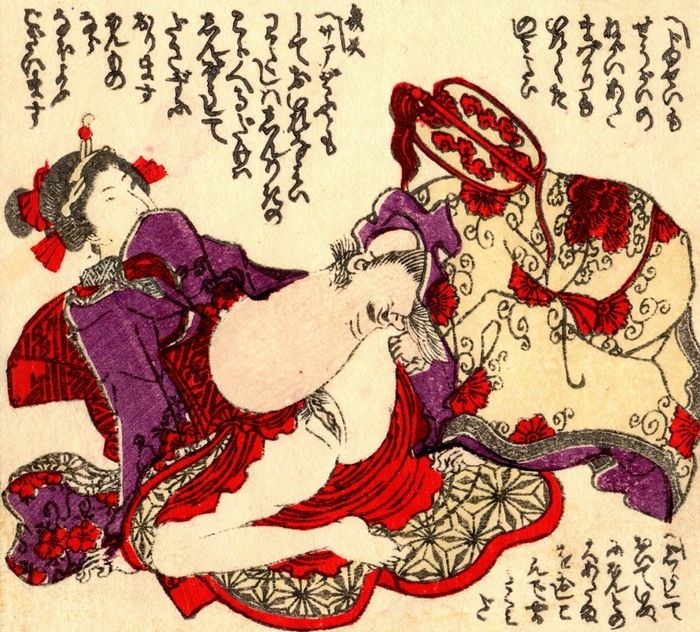
Fig.10. 'The Lucky God Fukurokuju using his head as penis' (c.1890) from 'Iwase Shellfish' by Utagawa school
Click HERE for more articles on exciting Asian erotic paintings!
*makimono is a horizontal type of Japanese handscroll
**you can click the image to check out the whole scroll

